aurora borealis
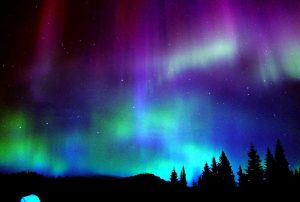
 When my husband, Bob and I went to Alaska a few years ago, I was hoping against hope that we would be able to see the Aurora Borealis. The likelihood was slim, of course, because they are most often visible in the winter and we were there in the summer. The Aurora Borealis is caused by solar flares, which occur when pent up magnetic energy on the sun’s surface is unleashed in blasts of radiation and charged particles. The resulting explosions are equivalent to the force of millions of hydrogen bombs, and the solar winds they create have the ability to wreak havoc on Earth’s atmosphere. That was precisely what happened in late August and early September of 1859, when the planet was bombarded by the largest solar storm on record. The so-called “Carrington Event” was named for the British astronomer, Richard Carrington, and it made the skies glow with shimmering, multi-colored auroras as far south as Hawaii. In Colorado, it was so bright that one witness reported people “could easily read common print” at night. And that was in August and September!! Why couldn’t I have been around to see that one?
When my husband, Bob and I went to Alaska a few years ago, I was hoping against hope that we would be able to see the Aurora Borealis. The likelihood was slim, of course, because they are most often visible in the winter and we were there in the summer. The Aurora Borealis is caused by solar flares, which occur when pent up magnetic energy on the sun’s surface is unleashed in blasts of radiation and charged particles. The resulting explosions are equivalent to the force of millions of hydrogen bombs, and the solar winds they create have the ability to wreak havoc on Earth’s atmosphere. That was precisely what happened in late August and early September of 1859, when the planet was bombarded by the largest solar storm on record. The so-called “Carrington Event” was named for the British astronomer, Richard Carrington, and it made the skies glow with shimmering, multi-colored auroras as far south as Hawaii. In Colorado, it was so bright that one witness reported people “could easily read common print” at night. And that was in August and September!! Why couldn’t I have been around to see that one?
Most of us have seen pictures of the Northern Lights, also known as the Aurora Borealis. The scene is unforgettable offering an entrancing, dramatic, magical display of dancing lights that are varying in color and fascinate all who see it. It’s hard to believe that an explosion on the sun that sends out radioactive magnetic particles into the atmosphere is responsible for this dazzling natural phenomenon. Of course it is quite complicated. If all those particles were able to just hit the Earth, the event would be disastrous. “The aurora is caused by the interaction of high-energy particles (usually electrons) with neutral atoms in earth’s upper atmosphere. This process is similar to the discharge in a neon lamp, or the fluorescence of a television screen. The strongest auroras are quite bright, comparable to moonlight. At the center of the sun, the temperature is 27 million degrees Fahrenheit (15 million degrees Celsius). As the temperature on its surface rises and falls, 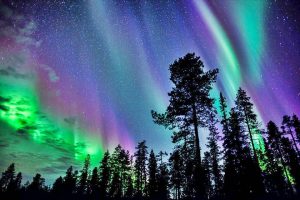
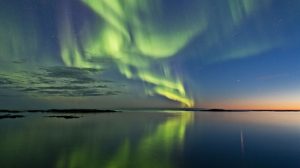 the sun boils and bubbles. Particles escape from the star from the sunspot regions on the surface, hurtling particles of plasma, known as solar wind, into space. It takes these winds around 40 hours to reach Earth. When they do, they can cause the dramatic displays known as the aurora borealis.” However it all happens, is pretty much irrelevant to most of us, we just like the beauty of the Aurora Borealis, and we will continue to be mesmerized by them.
the sun boils and bubbles. Particles escape from the star from the sunspot regions on the surface, hurtling particles of plasma, known as solar wind, into space. It takes these winds around 40 hours to reach Earth. When they do, they can cause the dramatic displays known as the aurora borealis.” However it all happens, is pretty much irrelevant to most of us, we just like the beauty of the Aurora Borealis, and we will continue to be mesmerized by them.
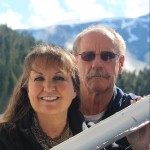 Because Bob and I took a cruise to Alaska last year, I have found myself interested in all things Alaskan. I don’t really think I would want to move to Alaska, because I am a bit of a wimp when it comes to snow and cold, but I have to say that Alaska is absolutely beautiful…and yes, I would got back for a vacation again…in a heartbeat. While I didn’t like the cool weather, Alaska is a place like no other. The United States took possession of Alaska on this day October 18, 1867, after purchasing it for $7.2 million…less than 2 cents an acre. The Alaska purchase comprised 586,412 square miles, about twice the size of Texas, and was championed by William Henry Seward, the enthusiastically expansionist secretary of state under President Andrew Johnson. Many people thought the purchase was frivolous. Public opinion of the purchase turned more favorable when gold was discovered in a tributary of Alaska’s Klondike River in 1896, sparking a gold rush. Alaska became the 49th state on January 3, 1959, and is now recognized for its vast natural resources and great beauty.
Because Bob and I took a cruise to Alaska last year, I have found myself interested in all things Alaskan. I don’t really think I would want to move to Alaska, because I am a bit of a wimp when it comes to snow and cold, but I have to say that Alaska is absolutely beautiful…and yes, I would got back for a vacation again…in a heartbeat. While I didn’t like the cool weather, Alaska is a place like no other. The United States took possession of Alaska on this day October 18, 1867, after purchasing it for $7.2 million…less than 2 cents an acre. The Alaska purchase comprised 586,412 square miles, about twice the size of Texas, and was championed by William Henry Seward, the enthusiastically expansionist secretary of state under President Andrew Johnson. Many people thought the purchase was frivolous. Public opinion of the purchase turned more favorable when gold was discovered in a tributary of Alaska’s Klondike River in 1896, sparking a gold rush. Alaska became the 49th state on January 3, 1959, and is now recognized for its vast natural resources and great beauty.
Since we were there, I found an app for my phone that tells me about earthquakes around the world, and since 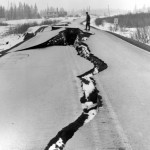 Alaska gets a lot of them, the names of some of the places we were at have shown up on my app periodically. There haven’t been any huge earthquakes, but there are still earthquakes. The reason earthquakes grabbed my interest was because of a movie we watched in Anchorage, about the about the 1964 Great Alaska Earthquake that occurred there. It was the largest earthquake in the history of the United States, registering 9.2 on the Richter Scale. The devastation from that earthquake is something that I will never forget. I wasn’t even there, and I will never forget it. When we walked past the area where so many houses were simply swallowed up…well, it was an eerie feeling. It was hard to shake it. One minute people were living their lives, and the next they are buried alive. Still, life moved on, and people persevered.
Alaska gets a lot of them, the names of some of the places we were at have shown up on my app periodically. There haven’t been any huge earthquakes, but there are still earthquakes. The reason earthquakes grabbed my interest was because of a movie we watched in Anchorage, about the about the 1964 Great Alaska Earthquake that occurred there. It was the largest earthquake in the history of the United States, registering 9.2 on the Richter Scale. The devastation from that earthquake is something that I will never forget. I wasn’t even there, and I will never forget it. When we walked past the area where so many houses were simply swallowed up…well, it was an eerie feeling. It was hard to shake it. One minute people were living their lives, and the next they are buried alive. Still, life moved on, and people persevered.
It takes a rather tough breed of people to live in Alaska. The weather gets extreme, and much of the state is, and always will be a wilderness area. Half of the year has extra long days, and half of the year has extra long nights. Yet, even with the extreme and sometimes brutal weather, the people of Alaska stay there. They work hard all summer to prepare for the long winter, and in summer’s long days, they are outside enjoying the fresh 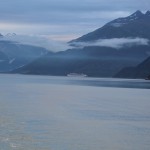 air well into the nighttime hours, because they know that the winter is coming and with it will be the short, cold, dark days. I don’t think most of us could handle Alaska, and yet those who do feel that it is a gift. And that is something I can understand.
air well into the nighttime hours, because they know that the winter is coming and with it will be the short, cold, dark days. I don’t think most of us could handle Alaska, and yet those who do feel that it is a gift. And that is something I can understand.
While I didn’t get to see the Aurora Borealis, I know that I would go back to Alaska for an Aurora Tour in a heartbeat. The mountains there are beautiful, and everything has a feeling of vastness. Alaska is a beautiful state, and one I would really recommend that people visit. While I wouldn’t live there, I would definitely go back there. You simply can’t see Alaska in a one week trip. All that does is whet your appetite. I’m really glad that we purchased Alaska, even if the people weren’t sure it was a great idea at first.

